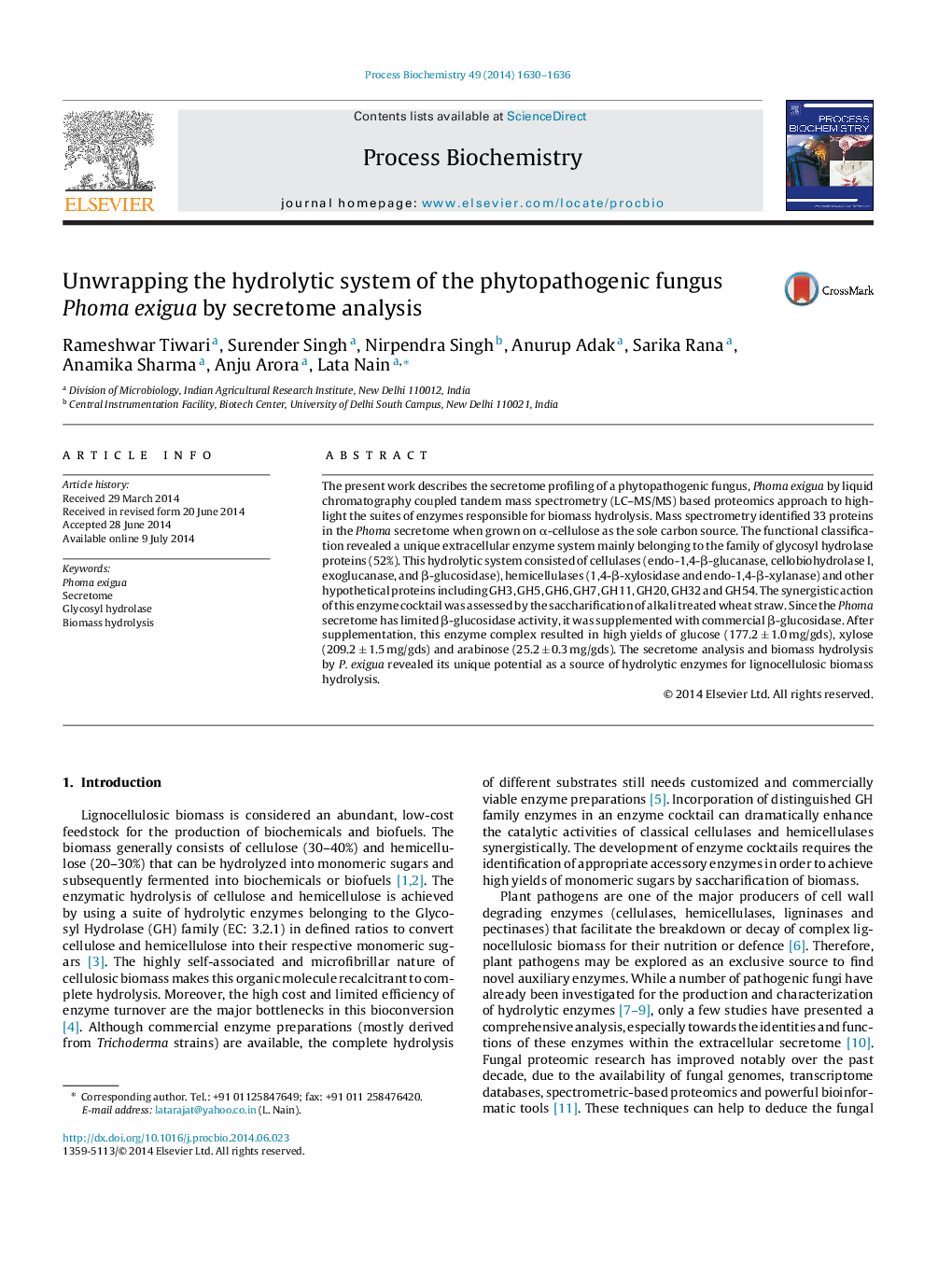| Article ID | Journal | Published Year | Pages | File Type |
|---|---|---|---|---|
| 34494 | Process Biochemistry | 2014 | 7 Pages |
•The secretome of phytopathogenic fungus P. exigua was deciphered for the first time.•Acetone proves to be best organic solvent for precipitation of Phoma secretome.•LC–MS/MS and zymography analysis revealed the presence of diverse GH family proteins with multicomponent endoglucanase.
The present work describes the secretome profiling of a phytopathogenic fungus, Phoma exigua by liquid chromatography coupled tandem mass spectrometry (LC–MS/MS) based proteomics approach to highlight the suites of enzymes responsible for biomass hydrolysis. Mass spectrometry identified 33 proteins in the Phoma secretome when grown on α-cellulose as the sole carbon source. The functional classification revealed a unique extracellular enzyme system mainly belonging to the family of glycosyl hydrolase proteins (52%). This hydrolytic system consisted of cellulases (endo-1,4-β-glucanase, cellobiohydrolase I, exoglucanase, and β-glucosidase), hemicellulases (1,4-β-xylosidase and endo-1,4-β-xylanase) and other hypothetical proteins including GH3, GH5, GH6, GH7, GH11, GH20, GH32 and GH54. The synergistic action of this enzyme cocktail was assessed by the saccharification of alkali treated wheat straw. Since the Phoma secretome has limited β-glucosidase activity, it was supplemented with commercial β-glucosidase. After supplementation, this enzyme complex resulted in high yields of glucose (177.2 ± 1.0 mg/gds), xylose (209.2 ± 1.5 mg/gds) and arabinose (25.2 ± 0.3 mg/gds). The secretome analysis and biomass hydrolysis by P. exigua revealed its unique potential as a source of hydrolytic enzymes for lignocellulosic biomass hydrolysis.
